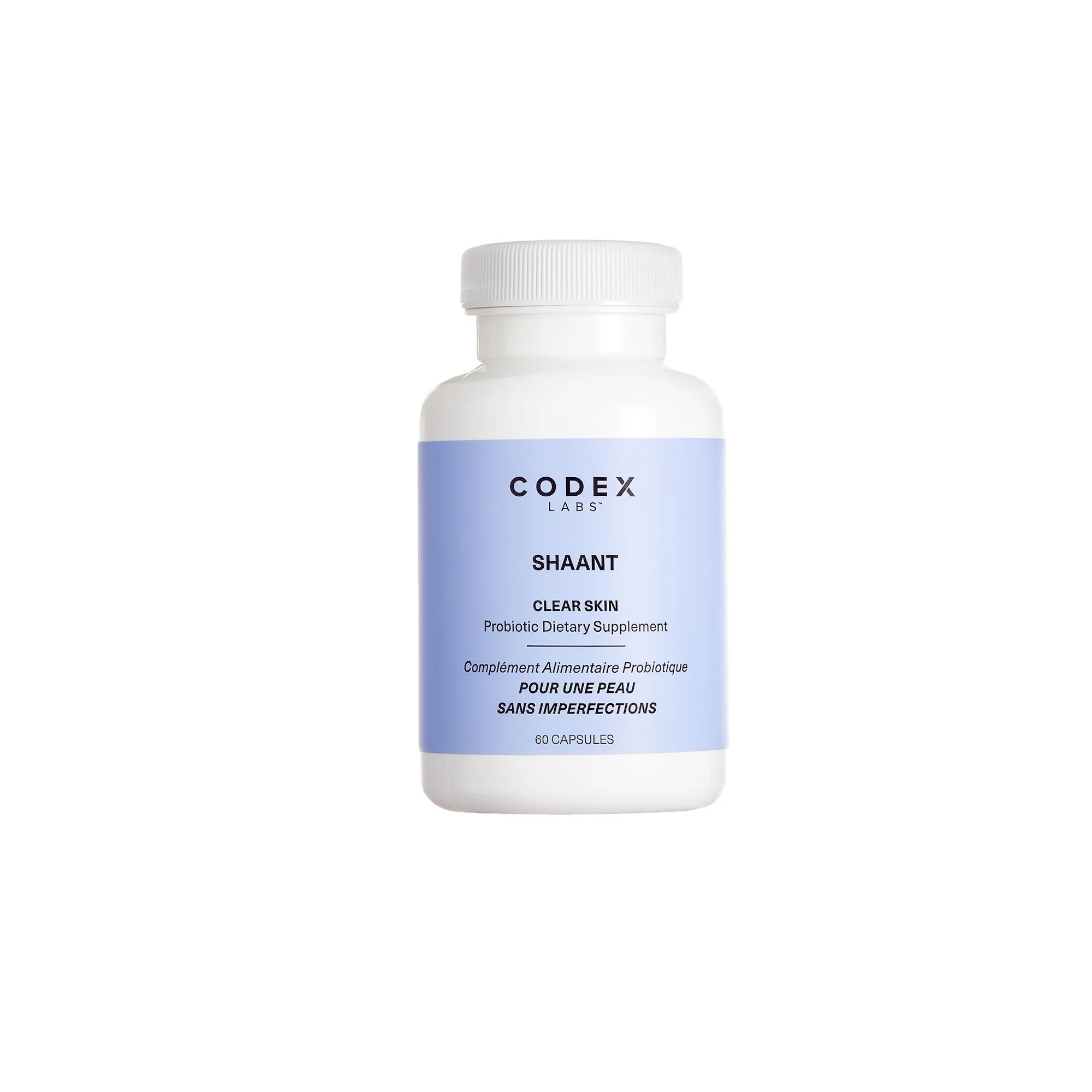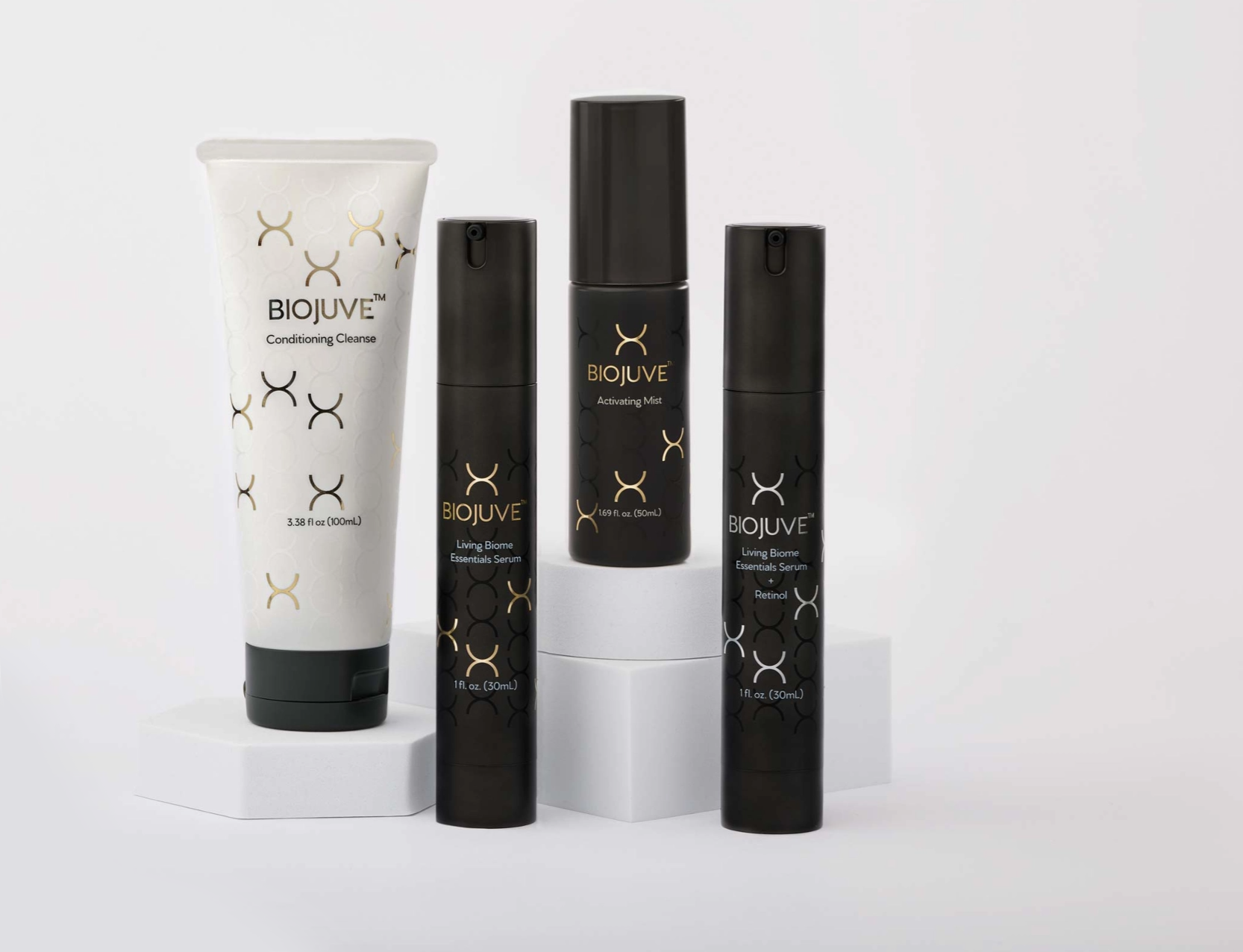For decades, we’ve been told that bacteria is enemy number one in the fight against acne. But over time, scientists have learned that the reality is far more complex. Not all bacteria are harmful, and ridding our skin entirely of them can do more harm than good. So skin-care brands like Phyla, Codex, and Biojuve are using good bacteria (yup—it’s a thing) to treat acne with microbe-infused serums, probiotics, and more.
“The outlook has always been that all bacteria are bad,” says Yug Varma, PhD, microbiologist and founder of Phyla. “There is one bacteria that drives the disease of acne, and it’s called C. acnes. The reason that it has the word ‘acne’ in its name is because we’ve known for probably 70 or 80 years now that C. acnes is intimately involved in driving acne. At the same time, recent microbiome research in the last 10 to 15 years has shown us that there are some really good bacteria on our skin that we don’t want to kill. They help us out.”
Research from 2013 examined the skin microbiome of 101 people (49 with acne and 52 without) and found that people with healthy (non-acneic) skin had more of the C. acne bacteria on their skin than those with acne. Translation? Not every strain of C. acne causes acne.
Thomas Hitchcock, PhD, chief science officer at Crown Laboratories (the creators of Biojuve) compares it to the way we view animal species. For example, wolves and dogs both belong to the Canis lupus species. “Do we really think a beagle that loves you and will be kind to your babies is the same as a gray wolf that would probably take your baby away and eat it? No,” says Dr. Hitchcock. “They’re the same species, but they’re very different animals genetically. And it’s the same thing with microbes.”
The issue with traditional acne treatments—like antibiotics, benzoyl peroxide, and retinoids like Accutane—is that they don’t discriminate, and kill any bacteria that come into contact with them. So armed with new knowledge, scientists are now taking a pro-bacteria approach to acne care. Phyla, which launched in June 2021, employs live “phages” (more on that in a minute) in its three-step Acne-Fighting Phage System ($120) that rid the skin of bad C. acnes while good bacteria stick around. In February 2023, Codex Labs launched one of its first supplements, Shaant Clear Skin Probiotic Supplement ($45), that’s designed to reset the gut microbiome in a way that targets skin inflammation, one of the main causes of acne. And during that same month, Biojive, a skin-care line that can only be purchased through physician practices, launched products that feature live strains of C. acnes that keep the skin healthy.
Phyla’s three-step phage system
A 2016 study that compared the skin microbiomes of acneic- and clear-skinned participants determined that those without acne had phages—AKA microscopic viruses that kill bacteria—present on their skin that those with acne did not have. This informed the creation of Phyla’s three-step phage system, which delivers live phages via serum.
“We all have annoying friends who have perfect skin, never get acne, just wake up, don’t wash their face, but like never get a pimple,” says Dr. Varma. “Chances are that they have these phages on their skin naturally, which are keeping their microbiome balanced and controlling the overgrowth of acne bacteria.”
The system starts with a gentle, non-foaming cleanser that’s made with exfoliating salicylic acid and anti-inflammatory tea tree oil. “The function of this cleanser is really to gently exfoliate your skin and to open up the pores to receive the serum,” says Dr. Varma. If you have a lot of dirt or makeup on your skin, start with a cleansing balm before you go in with this cleanser. Next up is the serum followed by the moisturizer.
“The serum is our hero product. It has our secret sauce—the live, active phages—that will hit your skin and start balancing your microbiome right away,” says Dr. Varma. “We also have a moisturizer because a lot of people with acne have dry skin, because of years of using harsh products. The moisturizer and all of the products, in fact, are formulated to be phage friendly.”
The products are also formulated with a special preservative system that allows the phages to stay alive and functioning. “The serum is stable for two to three months at room temperature, and it’s stable for a year in refrigeration,” says Dr. Varma. “And we’re pretty close to making it room-temperature stable for 12 months.”
Codex Labs’ acne-focused probiotic

We’re used to seeing the bacteria lactobacillus on the back of probiotic skin-care packaging, but what we don’t see is that there are many different strains of the stuff. Codex Labs founder Barbara Paldus, PhD, worked with board-certified dermatologist and Aruveyda practitioner Raja Sivamani, MD, to identify strains of lactobacillus that minimize leaky gut, which is what happens when bacteria leaks out of the gut and causes inflammation elsewhere within the body.
“The inflammation hits your pores and your pores start producing sebum that triggers cell death in the pores,” explains Dr. Paldus. Cell death leads to a buildup of dead skin cells, creating clogged pores that then fill up with sebum, “and then, your acne bacteria basically is in an environment with no oxygen and plenty of food, primed to exponentially multiply. And there you have your inflammatory pimples.”
This probiotic pairs a specific lactobacillus strain with another bacteria, bifidobacterium, and other anti-inflammatory ingredients like guggul and green tea leaf extract.
“Seventy to 80 percent of your immune cells are actually in your gut,” says Dr. Paldus. “So basically, these specific bacteria that are in our probiotic have been shown in studies to stimulate these immune cells. And these immune cells basically help calm your immune system and regulate your immune system, including your skin.”
Although you can see results within the first few weeks of taking this probiotic, Dr. Paldus recommends using it for 90 days in addition to cleaning up your diet to really reset your gut microbiome. If you’re taking good care of yourself—eating healthy, sleeping well, and exercising—you can likely stop the supplement after that 90-day period. “You might have some flareups here and there where you take it for a month for maintenance, but this is not like one of these supplements where you’re wedded to it long term,” she says. However, if your lifestyle isn’t quite there yet, you can keep taking the supplement indefinitely to maintain the effect.
Biojuve’s living Xycrobe technology

The products from Biojuve are all about flooding your skin with beneficial C. acnes to displace the bad ones before you go to bed. Start with the gentle cleanser, and then move on to the Living Biome Essentials Serum (available with or without added retinol) and the accompanying Activating Mist. The Living Biome serum features live microbes that have been freeze-dried and encapsulated into little crystals, aka Xycrobes. Add a pump of the serum into your hand and then spritz on the activating mist and mix. This feeds the microbes with a blend of water to essentially wake them up and arabinose, a sugar that they eat to get to work.
This is meant to be the only active in your nighttime routine, so if you still want to use retinol (something Dr. Hitchcok says isn’t really necessary) you can use the retinol version of this serum.
“There are some people who are married to their retinoids,” says Dr. Hitchcock. “We can’t guarantee that any retinoid that you want to use doesn’t have preservatives that would kill the Xycrobes. So we found one that was compatible and put it into a version that’s at a slightly higher price point.”
If you want to carry goodness into your morning routine, you can grab the day products, which include another serum, a barrier cream, and an SPF. “When you wake up in the morning, you can wash your face, but I choose not to because I like to keep all my Xycrobes on,” says Dr. Hitchcock. If you do wash your face, you can then add the Biome Support Complex serum, which features a fermented byproduct of the Xycrobes. “So basically, if you do opt to wash your face, this will actually put back on some of the goodies that they secreted all night that you just washed off,” he says. It also creates a film on the skin, protecting all the ingredients you just put on from interacting with the preservatives or other ingredients in any additional skin care or makeup you want to add on top,
Then, you can add the Hydrating Barrier Cream (available in Normal-to-Dry and Normal-to-Oily) which also includes film formers. Finally, you can finish off with the Sheer Finish SPF 50+ Sunscreen, which contains a super-blend of hydrating hyaluronic acid, antioxidants, vitamin E, and shea butter.
Who can benefit from using good bacteria to treat acne
If you find that traditional acne products are too harsh for your skin, or that you can’t find something that works the way you want it to, you can give these good bacteria products a try.
